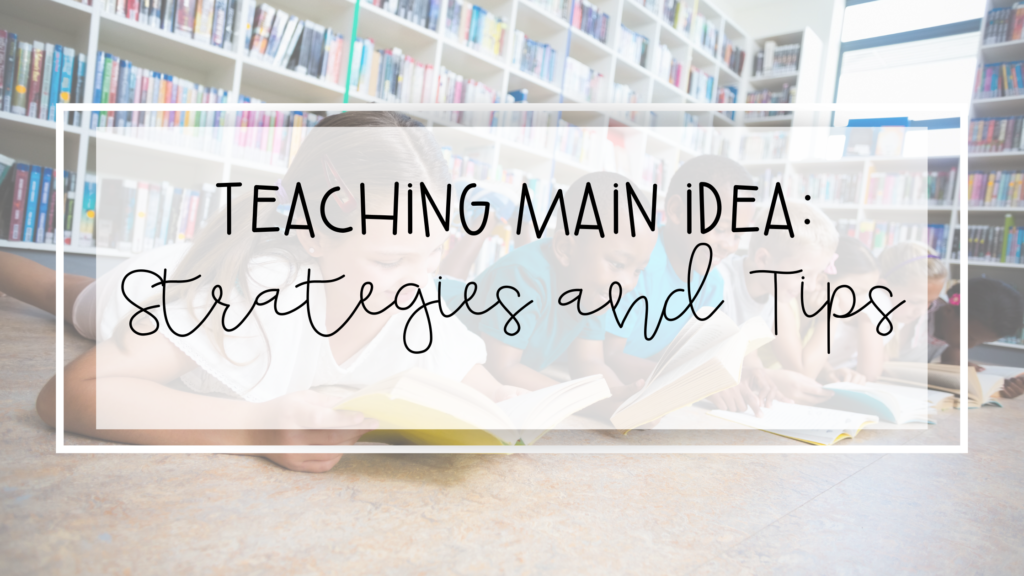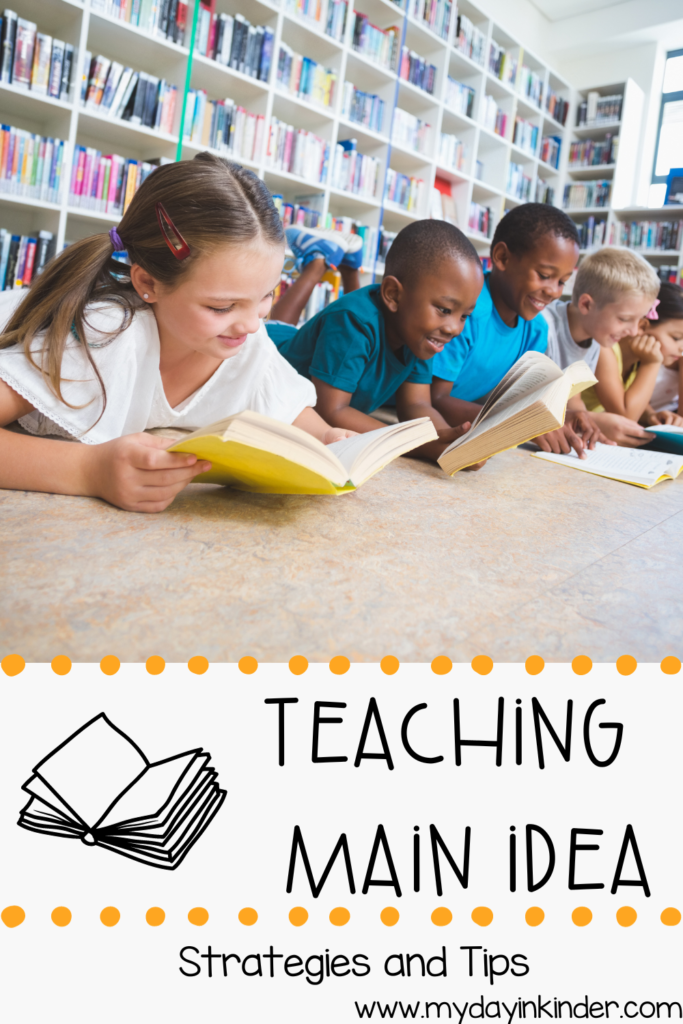5 Simple Strategies for Teaching Main Idea in Kindergarten
Teaching kindergarten students the concept of main idea may seem like a daunting task, but with the right strategies, it can become an engaging and exciting journey. In this blog post, we’ll explore various strategies for teaching main idea to help kindergarten teachers unlock the secrets of main idea comprehension for their young learners.

What is the Main Idea of a Text?
Understanding the main idea involves grasping the fundamental message that ties together all the details in a text. For kindergarteners, this might mean recognizing the central theme of a story or understanding the main point of a simple passage.
Teachers often use the terms “main idea” or “central idea” when talking about non-fiction texts. This is because we want students to be able to uncover what they just read “mostly about.” Students are expected to dive deeper than just the overall topic. When reading a book about polar bears, we want students to understand the main topic is polar bears. But to also be able to tell us the main ideas of specific sections, i.e., “what the polar bear eats” or “how the polar bear stays warm.”
When discussing fiction, many teachers talk about the “central message” or “theme.” This is when students gather all of the information from characters, events, problems/solutions, etc., to determine a lesson they can learn from the text. Many common main messages or central messages are “Treat others like you want to be treated” or “Don’t judge a book by its cover.”
Different Names for “Main Idea”:
Teaching little ones about the main idea is like unlocking a secret code, and guess what? There are cool nicknames for it! Forget the fancy terms; we’re talking “big idea,” “central message,” and “main point.” It’s like giving the main idea a street name that kindergarteners can vibe with.
Big Idea: Encourage students to identify the overarching theme or concept in a story or passage. What is the big idea that ties everything together?

Central Message: Introduce the term “central message” to convey the primary lesson or takeaway from a text. What is the author trying to communicate to the readers? This is often used with fiction texts.
Main Point: Use the phrase “main point” to highlight the primary focus of a passage. What is the key information that stands out?
Why is the Main Idea Important?
Understanding the main idea is a crucial skill that sets the stage for advanced reading comprehension. Here are some reasons why teaching the main idea is essential:
Comprehension Building: Grasping the main idea enhances overall comprehension, enabling students to extract meaning from the text and make connections between different elements.
Critical Thinking Development: Analyzing and identifying the main idea encourages critical thinking skills as students learn to distinguish between essential and non-essential information.
Different Strategies for Teaching Main Idea:
There are many ways to teach the main idea when it comes to kindergartners. You want to ensure that you are giving students different options and ways to learn. Students all learn differently, and giving multiple opportunities and teaching them in different ways can help students.
Read-Aloud Sessions: Engage students in interactive read-aloud sessions where teachers emphasize the key themes and concepts. Pause to discuss what the main idea might be as the story progresses. If focusing on the central message in fiction books. Consider reading books that all have the same topic, like growth mindset or the gingerbread man, but have different lessons students can learn from the story.

Picture Walks: Before diving into the text, conduct a “picture walk” to discuss the images and predict what the story might be about. This pre-reading activity lays the foundation for understanding the main idea.
Sorting Activities: Create sorting activities where students categorize details from a text into “important” and “not important” piles. This hands-on approach helps them discern the main idea.
Story Retelling: After reading a story, encourage students to retell it in their own words, focusing on the main idea. This verbal reinforcement solidifies their understanding.
Story Mapping: Use visual aids like story maps to help students identify key elements such as characters, setting, and plot. This visual representation can guide them in recognizing the main idea.
Teaching the main idea to kindergarten students doesn’t have to be an overwhelming task. By incorporating these strategies into your lesson plans, you can make the learning process enjoyable and effective. As young minds grasp the concept of the main idea, they embark on a journey toward becoming proficient readers and critical thinkers.

